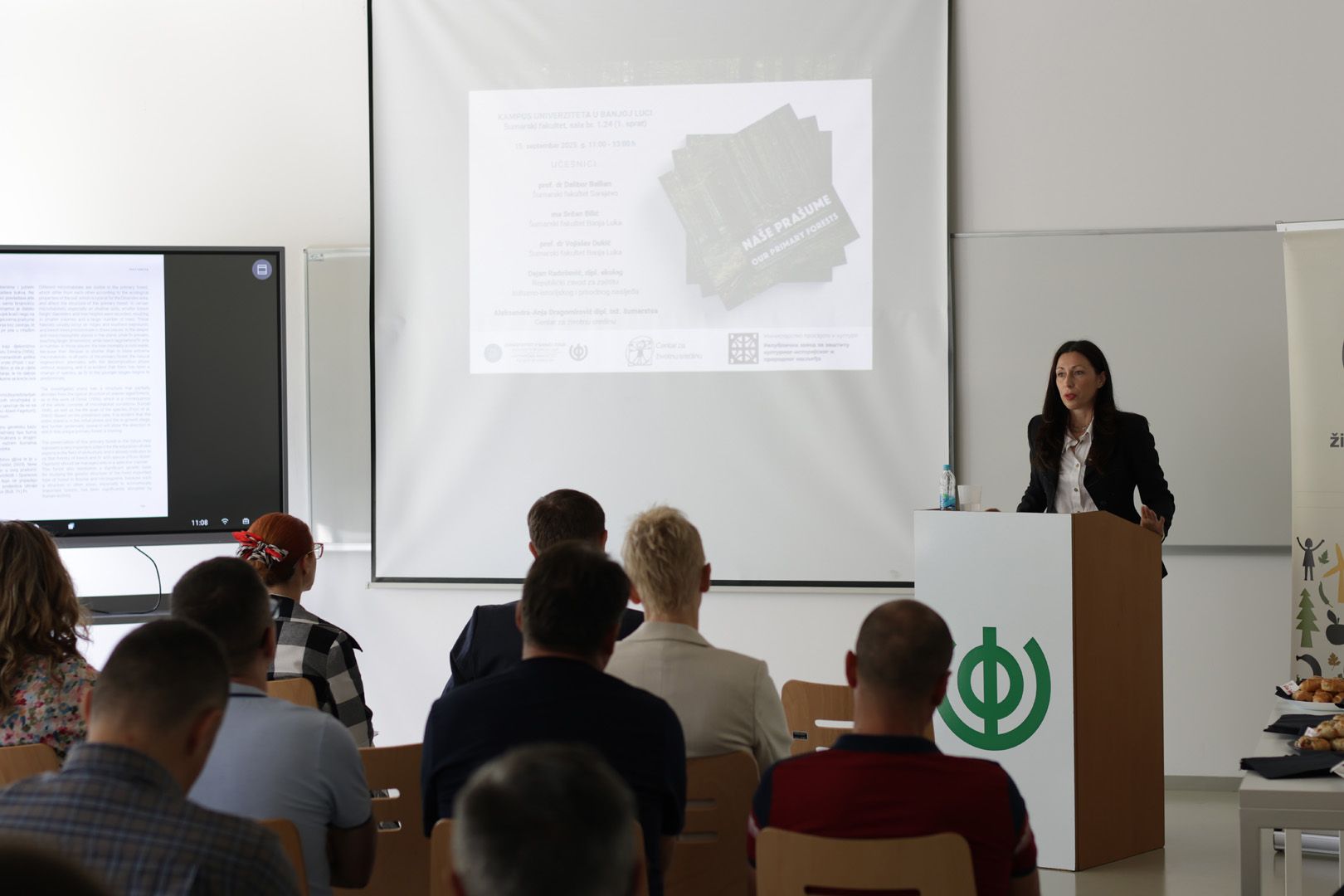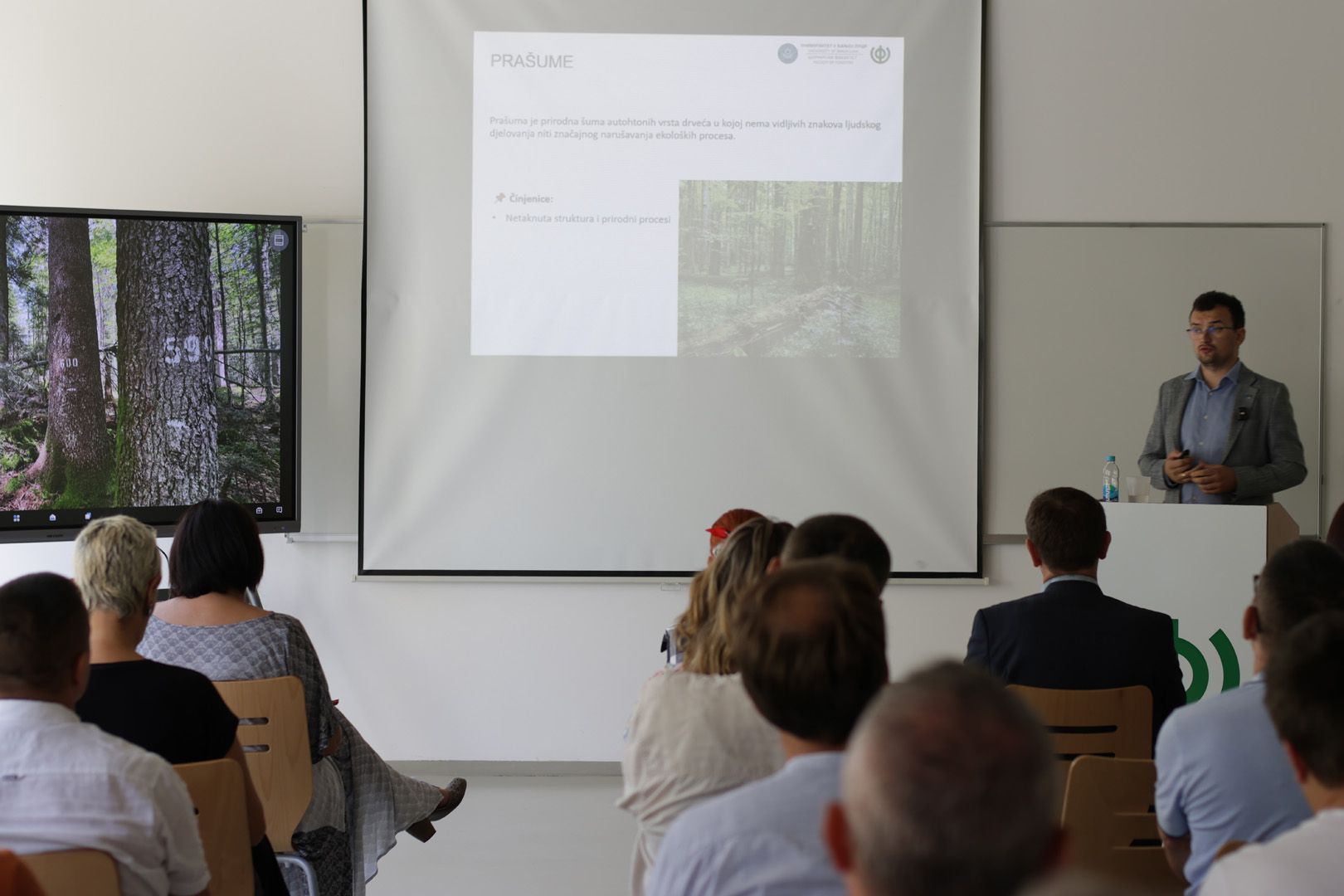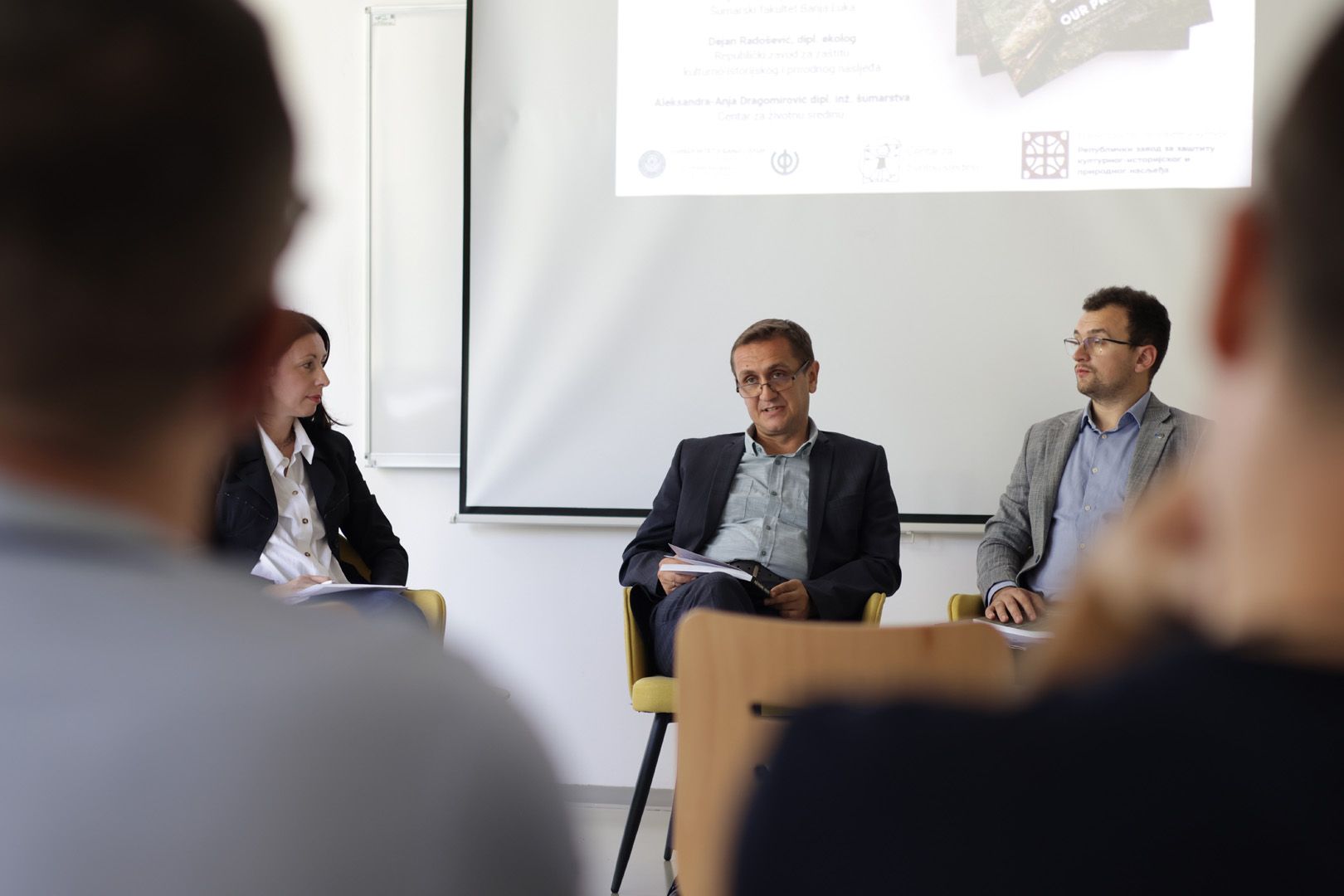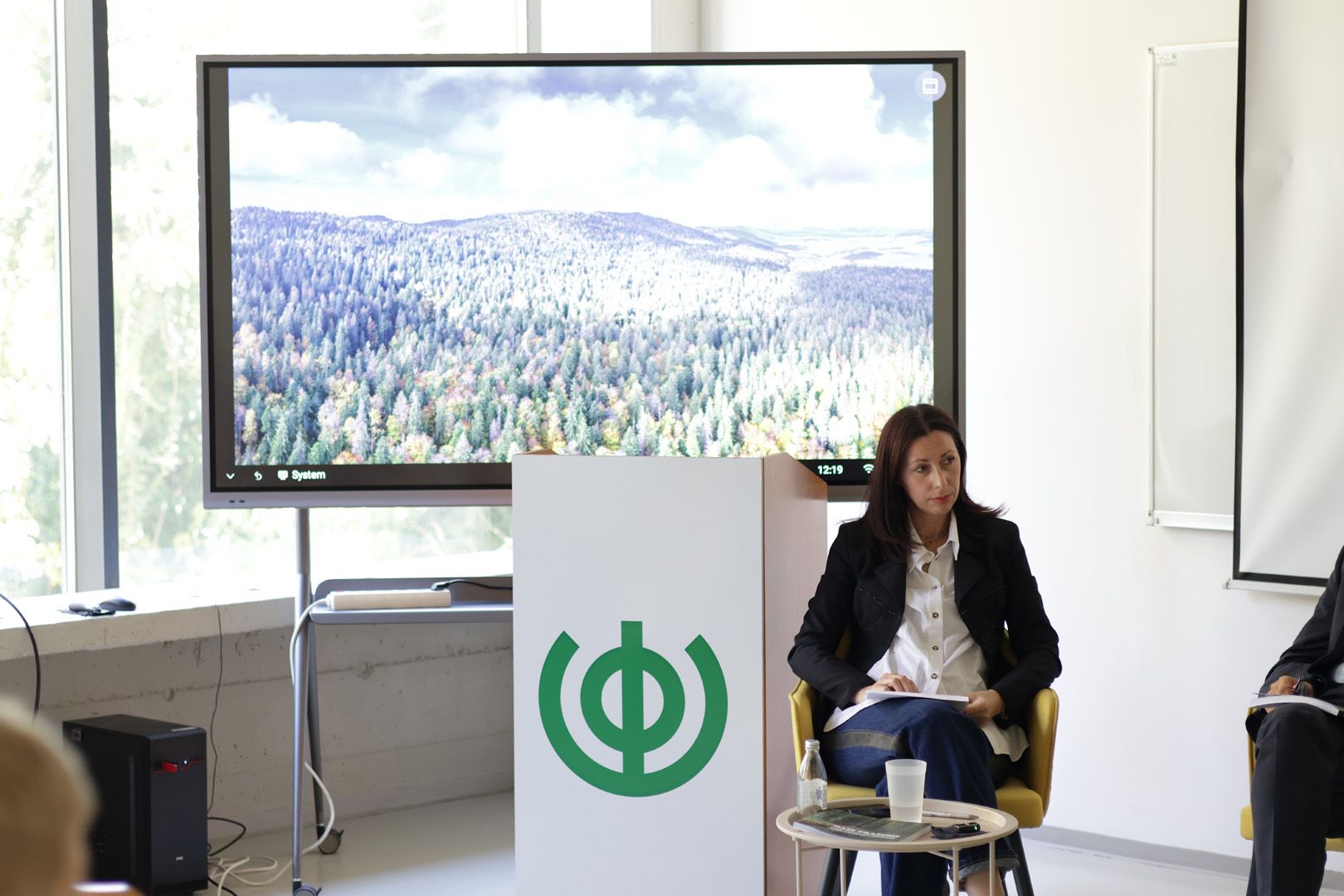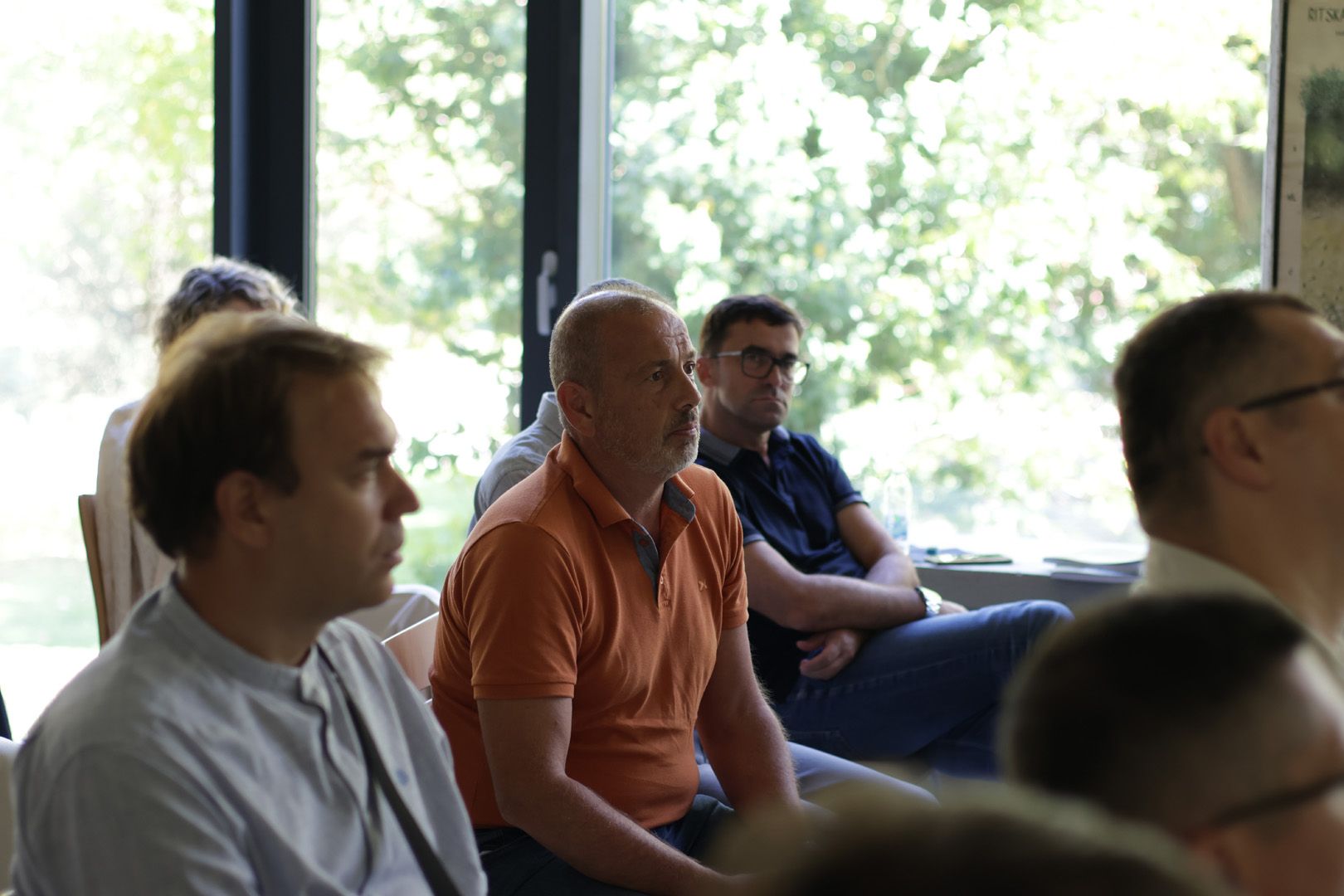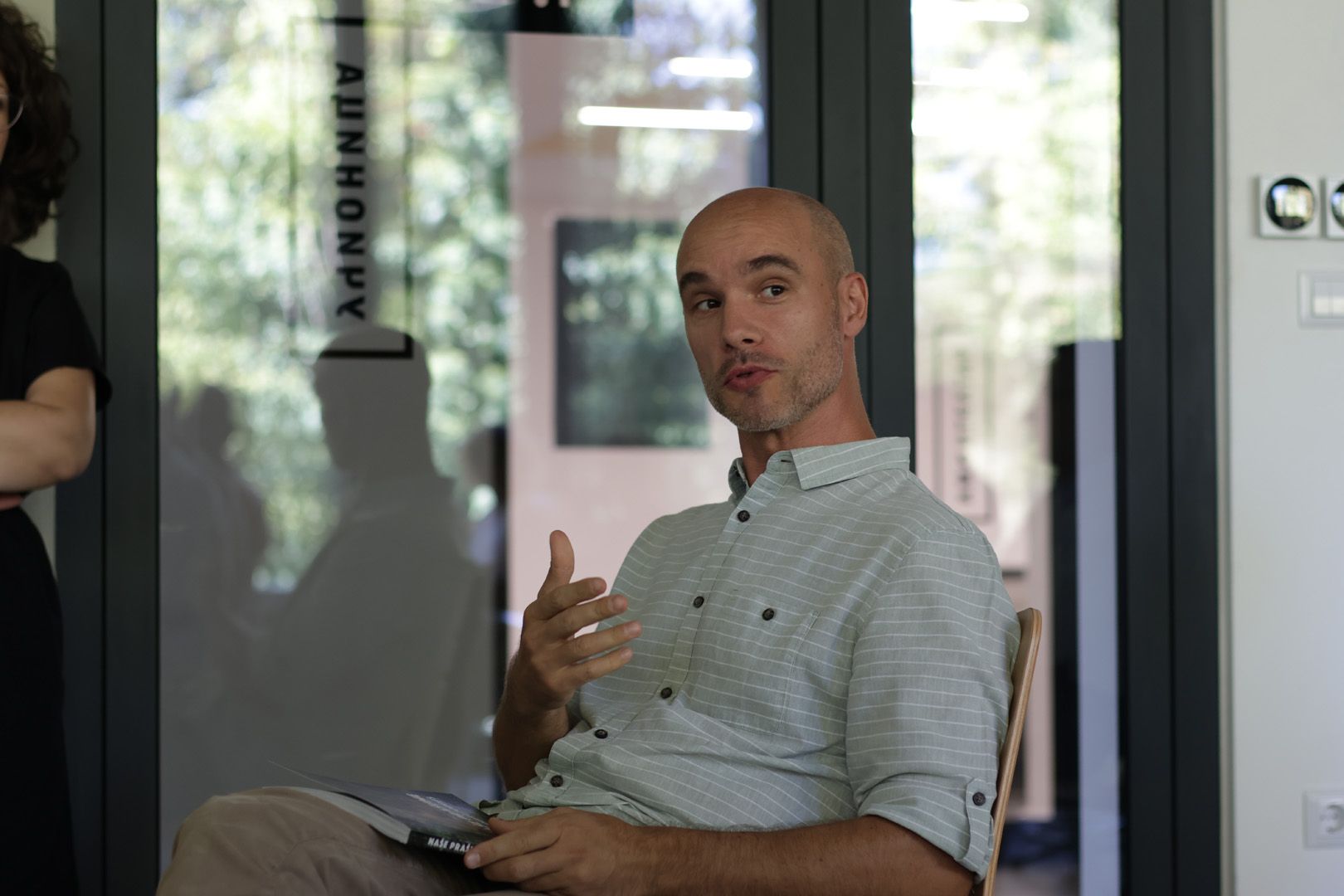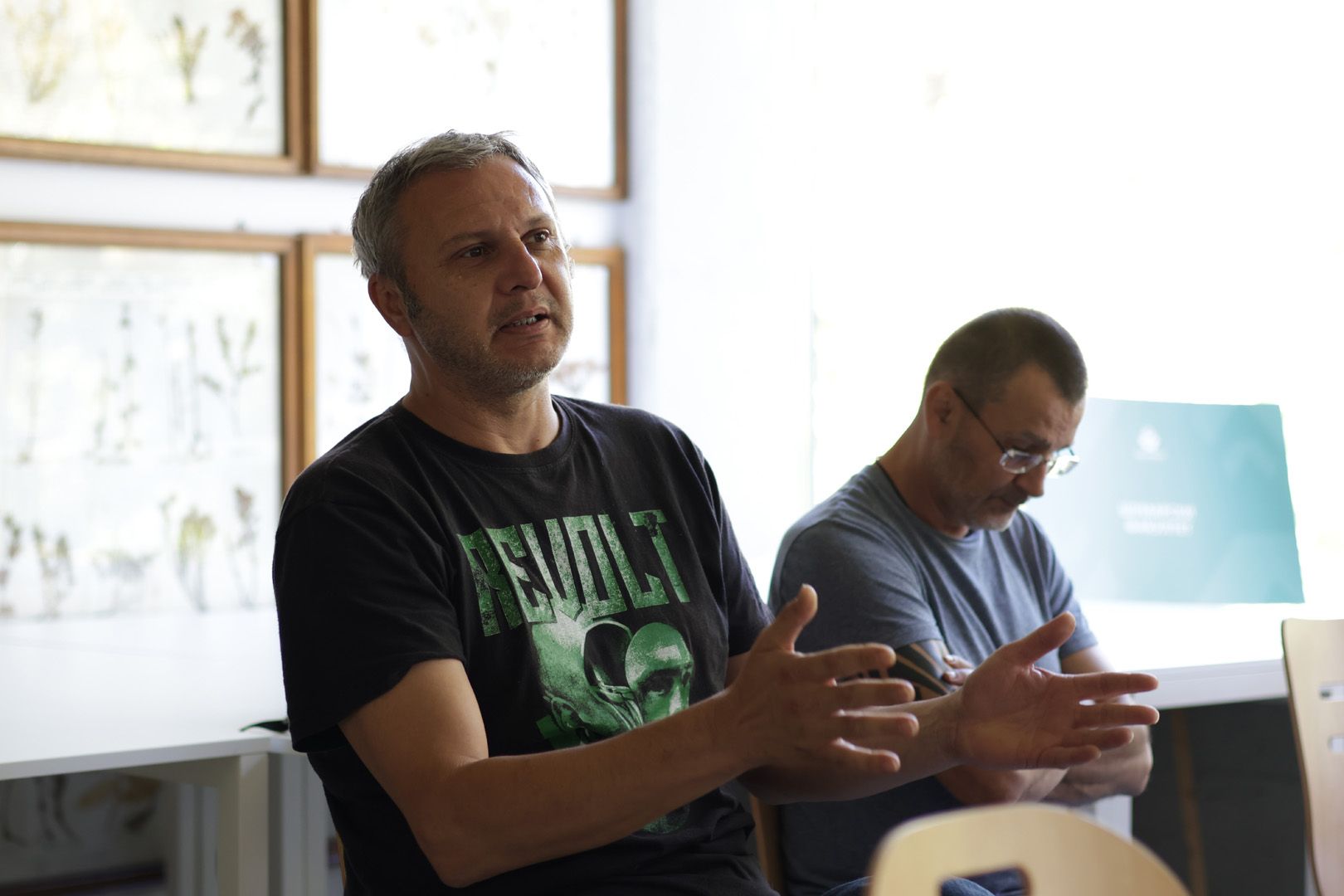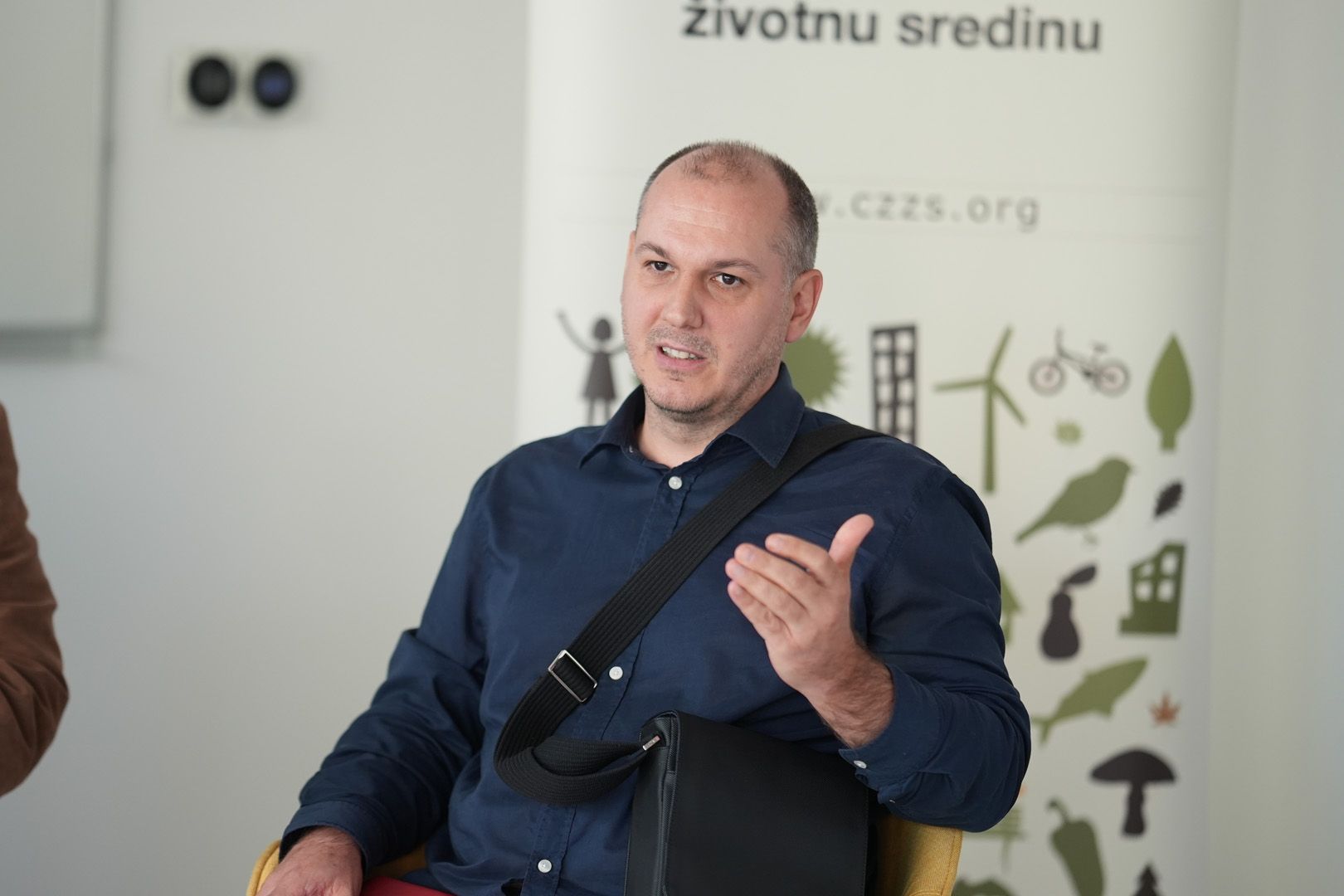In a packed hall of the Faculty of Forestry in Banja Luka, on September 15, 2025, we marked the International Day of Primeval Forests.
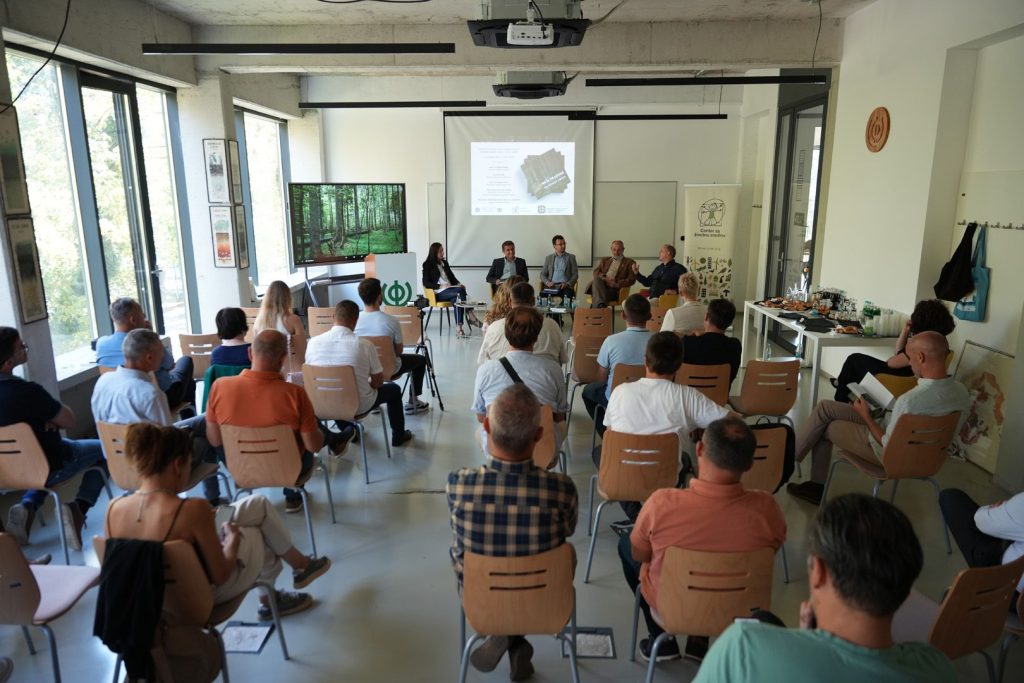
How much of primary forest is protected in our country, what threats these unique ecosystems face, and what their specific characteristics are, could be learned from experts: Prof. Dr. Dalibor Ballian (Faculty of Forestry, Sarajevo), M.A. Srđan Bilić (Faculty of Forestry, Banja Luka), Prof. Dr. Vojislav Dukić (Faculty of Forestry, Banja Luka), and Dejan Radošević, graduated ecologist (Institute for Protection of Cultural, Historical and Natural Heritage of the Republic of Srpska). The discussion was moderated by Aleksandra-Anja Dragomirović from the Center for Environment, the organizer of the event, supported by the German foundation EuroNatur within the project “Forests Beyond Borders 2.0.”
Primary forests are unique ecosystems of exceptional biodiversity, representing the most natural form of forest stands and a symbol of untouched nature. They are the result of centuries-long natural processes, making them key to preserving global biodiversity and ecosystem stability. These forests are characterized by complex structures, the presence of old trees, deadwood, diverse microhabitats, and natural forest regeneration dynamics.
To raise awareness of their importance, September 14th has been established as the International Day of Primeval Forests. At the Faculty of Forestry of the University of Banja Luka, on September 15, 2025, the International Day of Primeval Forests was solemnly marked. On this occasion, expert lectures and discussions with distinguished specialists were held, along with the promotion of the book “Our Primary Forests – Overview of Primary Forests of Bosnia and Herzegovina with Analysis of the Legal Framework for Protection”, published by the Center for Environment.
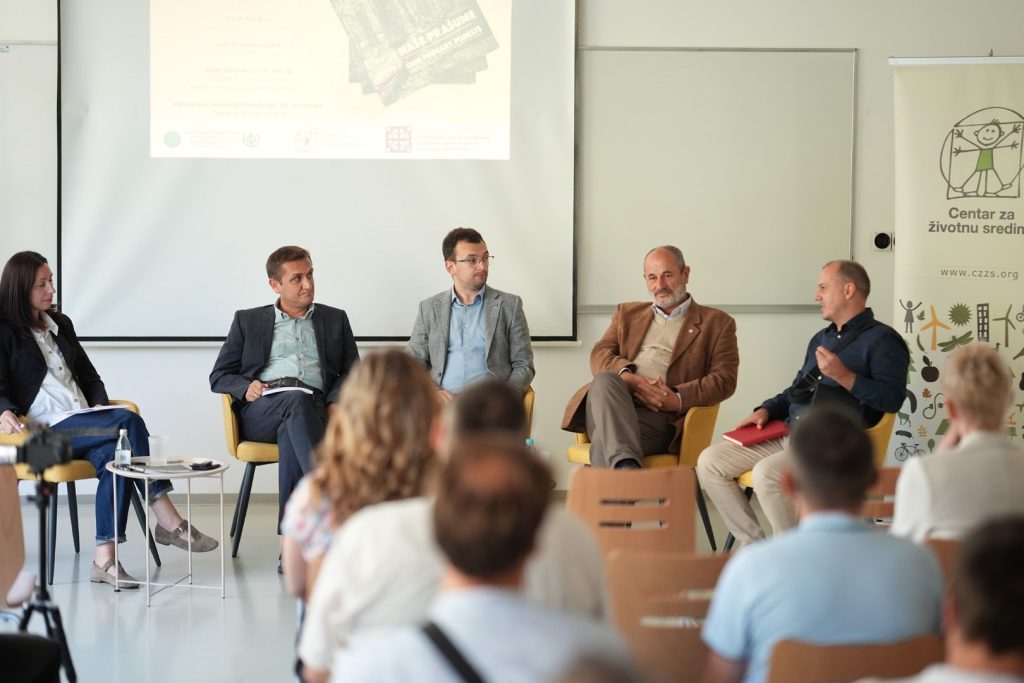
Prof. Dr. Dalibor Ballian (Faculty of Forestry, University of Sarajevo) spoke about the definitions of primary forests, their current state, and the challenges these natural treasures face in Bosnia and Herzegovina. M.A. Srđan Bilić (Faculty of Forestry, University of Banja Luka) presented an overview of previous research and pointed out current scientific trends related to primary forest ecosystems in the region and Europe. The reviewers of the publication, Prof. Dr. Vojislav Dukić (Faculty of Forestry, University of Banja Luka) and Dejan Radošević, dipl. ecologist (Institute for Protection of Cultural, Historical and Natural Heritage of RS), gave their reflections on the published book. Prof. Dr. Dukić emphasized the importance of primary forests as models for close-to-nature management of commercial forests, while Radošević highlighted the legal aspects of protection and the possibilities of placing new sites in BiH under formal protection.
After the introductory lectures, a panel discussion was held with the participation of the organizers – the Center for Environment – together with representatives of institutions: University of Banja Luka, University of Sarajevo, Ministry of Agriculture, Forestry and Water Management of RS, Institute for Protection of Cultural, Historical and Natural Heritage of RS, Federal Ministry of Agriculture, Water Management and Forestry, the public enterprise “Šume Republike Srpske”, as well as interested citizens and students.
“Primary forests are not only a matter of biodiversity conservation – they are also a matter of responsibility towards future generations, climate resilience, and international obligations that BiH has as a signatory to numerous environmental conventions,” was emphasized during the discussion. It was underlined that primary forests are among the most valuable ecosystems, home to a large number of plant and animal species. These forests absorb enormous amounts of carbon dioxide and represent the largest carbon stocks in Europe, especially the primary forests of the Dinarides, such as Janj, Lom, and Perućica.
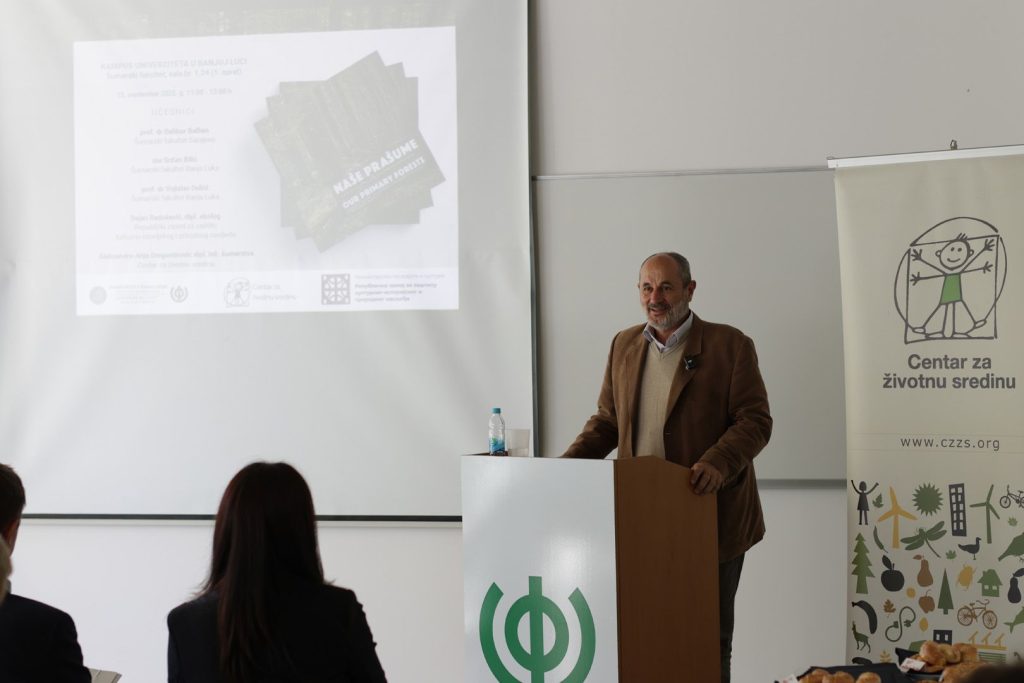
According to the book “Our Primaryl Forests”, Bosnia and Herzegovina has 12 scientifically described primary forests: Bobija, Crni Vrh, Dubička Gora, Golija, Janj, Lom, Mačen Do, Malovčića Dolina, Perućica, Plješevica, Ravna Vala, and Trstionica. However, only three enjoy full protection under the RS Nature Protection Law – Janj, Lom, and Perućica. Particularly noteworthy is the strict nature reserve “Primary Forest Janj”, which was inscribed on the UNESCO World Heritage List in 2021 as part of Europe’s ancient beech forests. All other primary forests are protected through forestry laws (special-purpose forests, protective forests, high conservation value forests) or safeguarded exclusively by the professional and scientific community.
The event at the Faculty of Forestry once again reminded us that primary forests are not only a symbol of untouched nature but also natural laboratories for studying dynamic processes, climate change, and models of sustainable forest management. The Center for Environment will continue to promote, research, and protect the primary forests of Bosnia and Herzegovina in the coming period.
